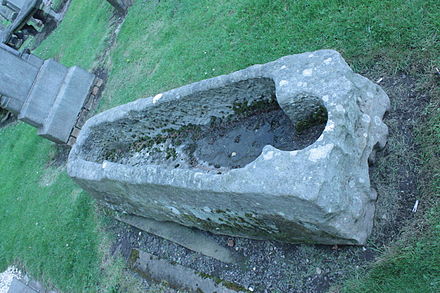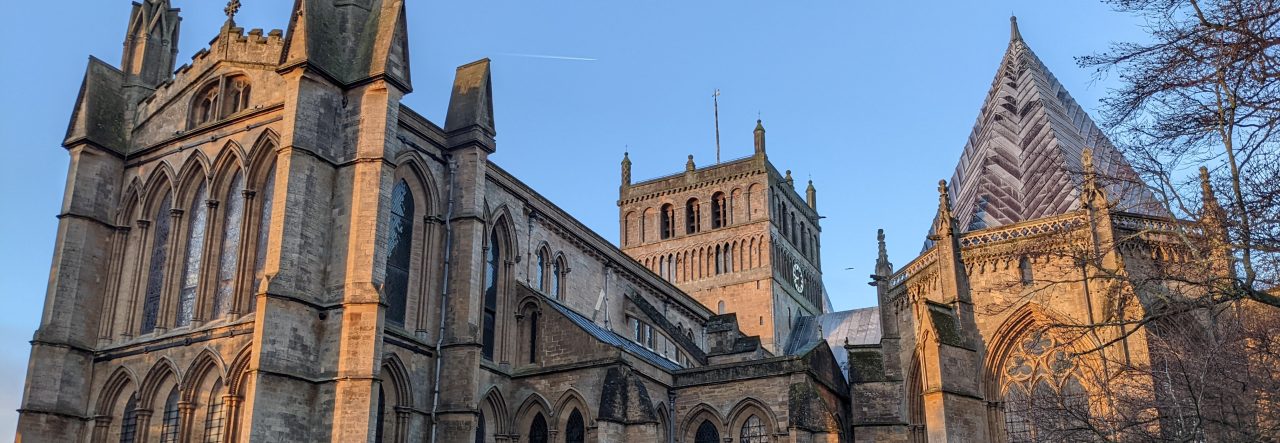
I have been taking people’s funerals since I was twenty-five. I have seen hundreds and hundreds of funerals of all kinds, in all kinds of places, surrounded by a huge variety of rituals and customs that made the grieving manageable for the mourners. But I have never seen a time like this.
Everything in us calls out to be together. In Congo, as soon as a death was known, you headed for the home of the deceased. There, in the main room, was the body laid out in the middle of the room, and around the walls were all the mourners, wailing, crying, praying, singing, testifying to God’s goodness in the life of their brother or sister. No one was excluded; children and babes in arms, the oldest and most infirm, all took part. It was the same in 1980s Hartlepool – still the custom to have the deceased at home in the front room, with visits from family, friends and neighbours, and there was still open and very public wailing at funerals. No middle-class sniffing.
Nevertheless, however we do it, we want to do it together. And now we can’t. No touches, no hugs, no arms around shoulders. Nothing that tells us, in a way that words struggle to, that we are together in the face of death, that there is human solidarity.
Churches are dark. No funerals there. Churchyards are still open. One or two clergy taking graveside services. A very few mourners, and all told be socially distanced. But many don’t have open churchyards in their parishes, and besides, not many people want such a ceremony. Funeral Directors find it hard to find clergy who will take funerals, they tell me – the retired are staying at home, and the active are too hard-pressed. So they ring celebrants.
Crematoria are still open. The picture of what happens and is allowed is hugely variable. Leeds, Bradford and Airedale have banned all families from attending. In this region there are limits on the numbers allowed to attend. Most crems allow at least ten mourners, some fifteen, and one, up to twenty-four. This seemed a lot to me, and I was nervous about going there. But the organisation of the place was such that people were well spaced. There was copious wiping down of everything between every ceremony, masks and gloves. I was marginally relieved.
All preparation has to be done by phone. This is not what I would want. The long calls are exhausting – much more than making home visits. And they are much less useful to the families. When you visit they get to see you and have a sense of what they are going to get on the day – sometimes they say how reassured they are after meeting. But that is gone.
The funeral itself is all very strange. I don’t go out and meet the family as I would normally. I stay inside and wait for them to come in. I remain behind my lectern. If a family member wishes to speak they must do it from where they are. There is no touching of coffins, no laying of flowers on coffins. There are no floral displays – the florists are shut.
Most crematoria now require the curtains to be closed around the coffin – not something that many people want. At the end we file out. There are no hugs, no touching, no consolation. We stand around awkwardly for a minute or two. There are no wakes, no celebrations, no funeral teas. No time to stand and chat and remember. After a very short time we all head back to our isolation.
There will be memorial services, I am sure. But, as one funeral director’s bearer said to me yesterday, “It won’t be the same; the moment will have passed.” There are some who are too afraid to go to a funeral, or who don’t want to be bothered – they chose Direct Cremation – just a hearse with a plain coffin turning up and dropping off a body for burning – no ceremony, no mourners, no one, nothing. I wonder what all this unprocessed grief will do to the nation in the years to come.
I try and write my ceremonies as carefully as I can – I listen and reflect what the families have said to me. I pray if they ask for it, and I pray internally all the time. I try and let my words carry something that will offer some consolation. And I always send them a complete script of what is said, so they can look at it afterwards, when the emotion of the moment has passed.
At the first socially distanced funeral I took, there were three mourners in the front row. They were well-separated. As the curtains closed, one woman reached out her hand to the chief mourner, the son of the deceased. He started to raise his hand, then hesitated, and went no further. The gap between them remained unbridged. They wept alone.

But then, Jesus did not always want to be touched. And yet his presence is to be found in look, and word, and in the loving that is expressed by message and note and screen time. In cake left on the doorstep, in shopping done and dropped off, in the smile that accompanies the avoiding of passers by. For now we cannot, but we will touch again, we will hug, we will hold hands, we will wipe away each others’ tears.
There will be so much to do, so much to listen to, so much to help ease the pain of our plague-time. God make us ready for a vast, unseen, unnoticed task that lies ahead.

Pingback: Opinion – 2 May 2020 – Thinking Anglicans